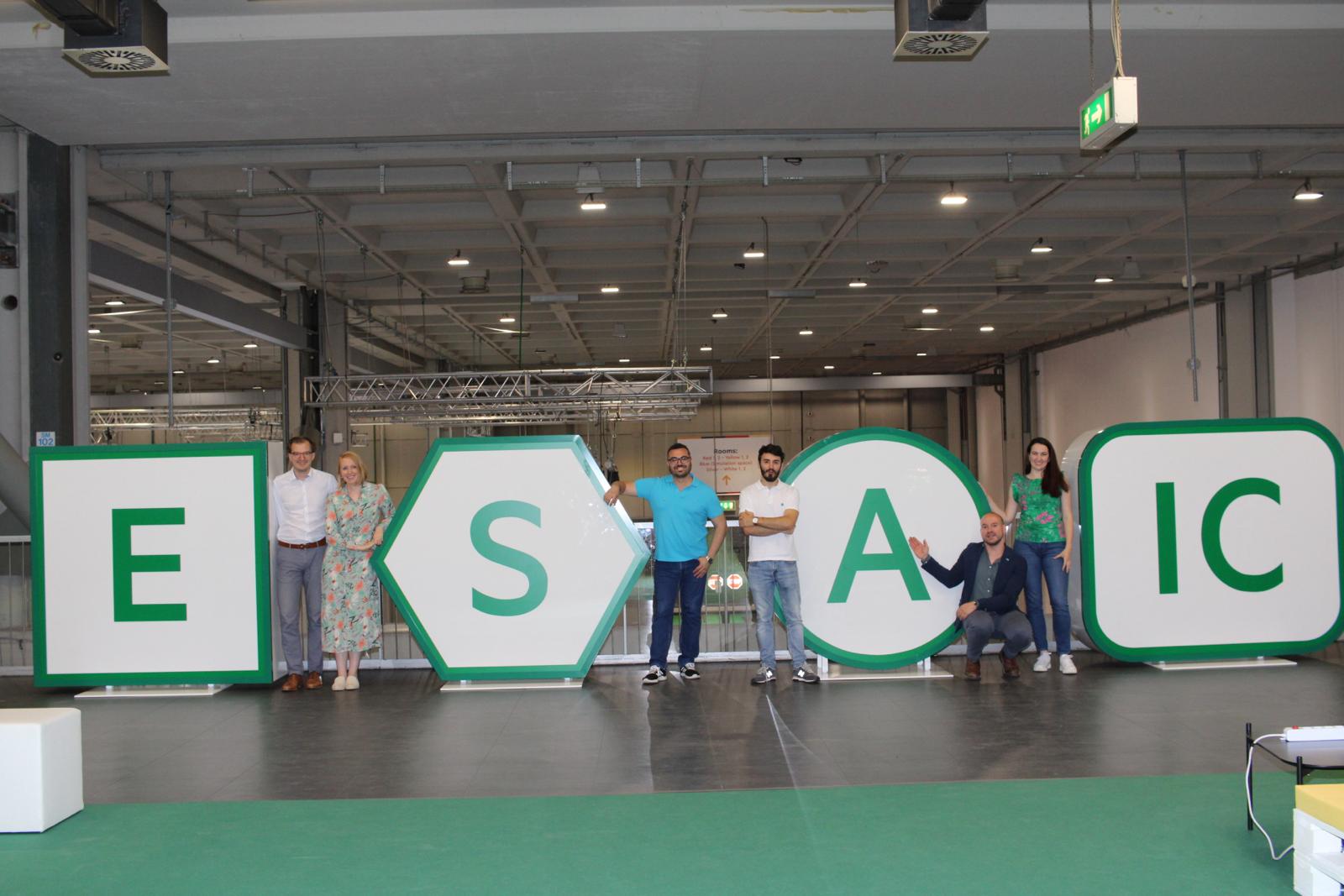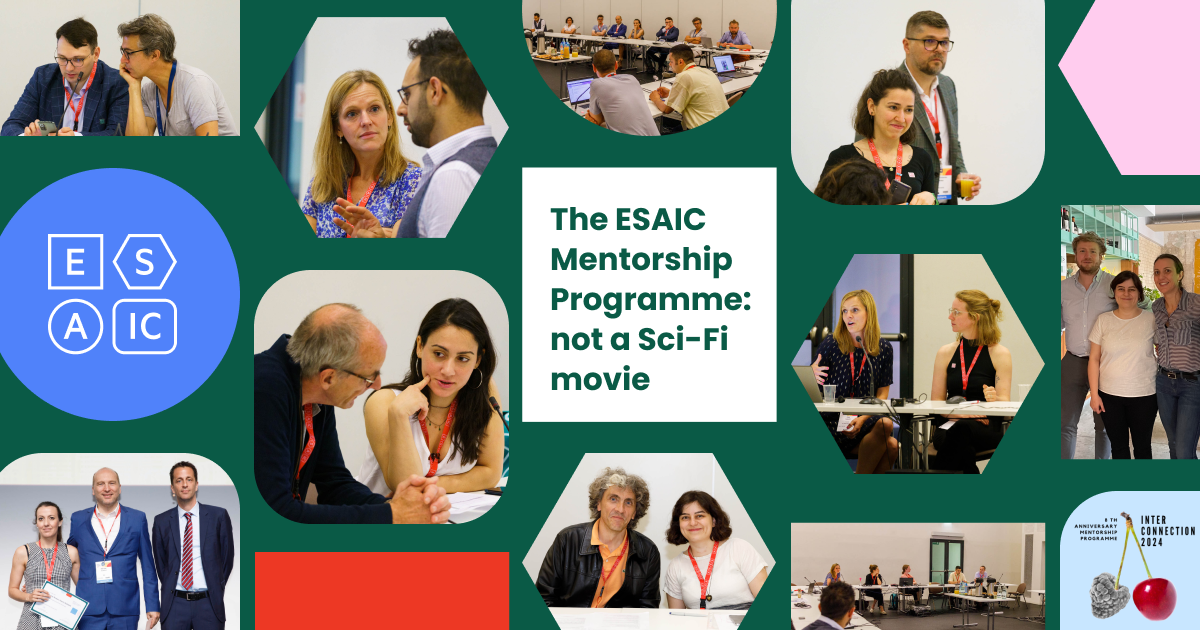ESAIC News
EA20 Newsletter: 2020 Best Abstract Competition – live report from Sunday
As in previous years, the judging panel had some difficult decisions to make in choosing this year’s first, second and third places among six high-quality abstract presentations.
The Chair of this year’s judging panel was Prof Daniela Ionescu (“Iuliu Hatieganu” University of Medicine and Pharmacy, Cluj-Napoca, Romania), assisted by Prof Christian Putensen (University Hospital Bonn, Germany) and Prof Ulrike Stamer (University of Bern, Switzerland).
WINNER, 1st prize, 3000 Euros: Dr Alberto Calvo, Hospital General Universitario Gregorio Marañón, Madrid, Spain. Alberto is 28 years old and doing his fourth and final year of residency in anaesthesiology.
Abstract: BAPC-4 Lidocaine increases the inhibitory effect of ex vivo lung perfusion (EVLP) on the inflammatory response in lungs obtained from asystole donors
Click here for full abstract
Congratulations on your win Alberto! What first gave you the idea to do your study?
A: Thank you! I am member of an experimental research group since I began studying medicine. For several years we have studied the inflammatory response and its possible modulation by different molecules in lung surgery. After different studies about the effects of lidocaine in the inflammatory response due to lung transplant surgery, we decided to use the properties of lidocaine during the ex vivo lung perfusion circuit, as a novel therapy for recovering lung grafts from asystole donors before transplantation.
Q: What were the main findings and implications of your study?
A: Ex vivo lung perfusion reduced levels of inflammatory and apoptotic markers in lungs obtained from asystole donors and this effect was increased by the administration of lidocaine. For this reason, EVLP may allow recovery of injured lungs obtained from asystole donors, previously considered non-viable, turning them into valid candidates for transplantation and this beneficial effect of EVLP may be enhanced by the addition of lidocaine.
2nd place: 2000 Euros: Dr Lucrezia Guardini, Lucrezia is 35 years old and lives and works in Brescia, Italy, as an intensive care physician for the Spedali Civili University Hospital.
Abstract: BAPC-1 Functional brain alterations during delirium in ICU: a nested case-control resting-state fMRI study.
Click here for full abstract
https://drive.google.com/file/d/1vpor5xUHEllbPoAM2UzEn43Xy83ydbcG/view?usp=sharing
Q: Well done for winning 2nd place Lucrezia! Tell us why you decided to do your study?
A: Thanks! Delirium is a clinically well-characterised condition and its medical relevance is related to high prevalence rate, increased adverse outcomes and mortality, especially in intensive care unit population. In our ICU specific attention has always been paid to delirium and patient-tailored treatment through pharmacological and non-pharmacological interventions; from this perspective, since delirium pathophysiology is still under debate, literature has been reviewed and we investigated the neuroinflammation and network dysconnectivity hypothesis.
Q: What were the main findings and implications of your study?
A: In our study we compared ICU patients diagnosed with delirium and healthy controls from
neuroradiology division archives: neural networks functional disruption clearly came out and
might explain the cerebral function disturbances we assess in our patients. These findings
strengthen the hypothesis of a functional disconnection in cerebral areas involved in
resting-state connectivity.
3rd place: 1000 Euros: Dr Max Schaefer. Max is 36 years old and an Attending Anesthesiologist and Assistant Professor at Beth Israel Deaconess Medical Center & Harvard Medical School in Boston, Massachusetts, USA.
Abstract: BAPC-7 Development and Validation of a Score for Prediction of Adverse Discharge in Elderly Patients after Lower Extremity Surgery (ADELES)
Click here for full abstract
Q: Congratulations on getting 3rd place in the competition Max. Tell us the idea behind your study?
A: It was a pleasure to be in the final! We observed that many of our patients and their families were very concerned whether they were able to return home after surgery when undergoing lower extremity surgery such as knee arthroplasty or hip fracture repair. We realised that it was important to them not just whether they might survive the hospital stay in good condition, but rather whether they were able to return to their previous, independent lives. We also realised that we were unable to make a good prognosis that might help them in their decision making.
Q: What were the main findings and implications of your study?
A: The ADELES score identifies several routinely and pre-operatively available factors that predict adverse discharge disposition – the loss of previously independent living – including patient demographics, comorbidities and surgical characteristics. In addition. we were astonished by how important socioeconomic factors such as being married or the patients’ insurance status were. The score proved its value when we validated it in an independent cohort from a competing hospital network. Of course, it is freely available to physicians worldwide – we have setup a website that can be reached from any smartphone to calculate the score – www.adeles-score.org.
Other finalists:
Dr Paola Hurtado, anaesthesiologist at Hospital Clinic of Barcelona, Spain.
Abstract: BAPC-2 Proseal laryngeal mask attenuates haemodynamic response and coughing during awakening in Transesphenoidal Pituitary surgery: A randomized Clinical Trial
For full abstract click here
Dr Fiona Desmond, staff specialist anaesthetist at Austin Health, Melbourne, VIC, Australia.
Abstract: BAPC-3 “Does our use of marginal liver grafts for liver transplantation adversely affect our liver transplant recipients? A 5 year retrospective review comparing marginal versus non-marginal liver grafts in a large transplant centre in Melbourne. “
For full abstract click here
Dr Xuehan Li, West China Hospital of Sichuan University, Chengdu, China.
BAPC-5 The minimum effective volume (MEV90) of ropivacaine for ultrasound-guided caudal block in anorectal surgery
For full abstract, click here
Following the announcement of the results, Prof Ionescu said: “In this selection, there was a good variety of topics, including animal studies, prospective clinical studies and retrospective large group studies as well. Our unanimous decision for the winner is Dr Alberto Calvo.”
She explains that the main factors in deciding the winner include that the research is a prospective study in the field of anaesthesia and intensive care, the novelty and potential impact of the topic and findings, study methodology, quality of statistics (including the size of study groups in case of retrospective studies), follow-up parameters and outcomes. “The quality of the oral presentation and the speaker’s availability and ability to answer the questions were additional deciding factors.”
She adds: “The panel would like to congratulate all finalists for the success of their posters, for the quality of the studies and variety of the topics. We would like to encourage more young researchers to send their abstracts for Euroanaesthesia 2021 in Munich and for subsequent years. This is always a very stimulating competition and one of the most enjoyable sessions in the congress program.”
Read More of our special newsletter covering our virtual congress
Visit our COVID-19 Resource Hub for other news and resources.











